 Graduation time is rapidly approaching and many graduate speech language pathology students are getting ready to begin their first days in the workforce. When it comes to juggling caseloads and managing schedules, time is money and efficiency is the key to success. Consequently, a few years ago I created SLP Efficiency Bundles™, which are materials highly useful for Graduate SLPs working with pediatric clients. These materials are organized by areas of focus for efficient and effective screening, assessment, and treatment of speech and language disorders. Continue reading SLP Efficiency Bundles™ for Graduating Speech Language Pathologists
Graduation time is rapidly approaching and many graduate speech language pathology students are getting ready to begin their first days in the workforce. When it comes to juggling caseloads and managing schedules, time is money and efficiency is the key to success. Consequently, a few years ago I created SLP Efficiency Bundles™, which are materials highly useful for Graduate SLPs working with pediatric clients. These materials are organized by areas of focus for efficient and effective screening, assessment, and treatment of speech and language disorders. Continue reading SLP Efficiency Bundles™ for Graduating Speech Language Pathologists
Search Results for: auditory processing
APD Update: New Developments on an Old Controversy
 In the past two years, I wrote a series of research-based posts (HERE and HERE) regarding the validity of (Central) Auditory Processing Disorder (C/APD) as a standalone diagnosis as well as questioned the utility of it for classification purposes in the school setting.
In the past two years, I wrote a series of research-based posts (HERE and HERE) regarding the validity of (Central) Auditory Processing Disorder (C/APD) as a standalone diagnosis as well as questioned the utility of it for classification purposes in the school setting.
Once again I want to reiterate that I was in no way disputing the legitimate symptoms (e.g., difficulty processing language, difficulty organizing narratives, difficulty decoding text, etc.), which the students diagnosed with “CAPD” were presenting with.
Rather, I was citing research to indicate that these symptoms were indicative of broader linguistic-based deficits, which required targeted linguistic/literacy-based interventions rather than recommendations for specific prescriptive programs (e.g., CAPDOTS, Fast ForWord, etc.), or mere accommodations.
I was also significantly concerned that overfocus on the diagnosis of (C)APD tended to obscure REAL, language-based deficits in children and forced SLPs to address erroneous therapeutic targets based on AuD recommendations or restricted them to a receipt of mere accommodations rather than rightful therapeutic remediation. Continue reading APD Update: New Developments on an Old Controversy
Pediatric Background History Questionnaire

Introduction to Social Pragmatic Language Disorders
 I have been making a lot of materials lately in order to disseminate information on a variety of helpful topics including insurance coverage for speech language services, improving feeding abilities in picky eaters, the importance of oro-facial observations during speech- language assessments and so on. I’ve also created an “introduction” series, which offers handouts on popular topics of interest, most recently on the topic of Auditory Processing Disorders (APD), which can be currently found in my online store HERE. Continue reading Introduction to Social Pragmatic Language Disorders
I have been making a lot of materials lately in order to disseminate information on a variety of helpful topics including insurance coverage for speech language services, improving feeding abilities in picky eaters, the importance of oro-facial observations during speech- language assessments and so on. I’ve also created an “introduction” series, which offers handouts on popular topics of interest, most recently on the topic of Auditory Processing Disorders (APD), which can be currently found in my online store HERE. Continue reading Introduction to Social Pragmatic Language Disorders
Intervention at the Last Moment or Why We Need Better Preschool Evaluations
 “Well, the school did their evaluations and he doesn’t qualify for services” tells me a parent of a 3.5 year old, newly admitted private practice client. “I just don’t get it” she says bemusedly, “It is so obvious to anyone who spends even 10 minutes with him that his language is nowhere near other kids his age!” “How can this happen?” she asks frustratedly?
“Well, the school did their evaluations and he doesn’t qualify for services” tells me a parent of a 3.5 year old, newly admitted private practice client. “I just don’t get it” she says bemusedly, “It is so obvious to anyone who spends even 10 minutes with him that his language is nowhere near other kids his age!” “How can this happen?” she asks frustratedly?
This parent is not alone in her sentiment. In my private practice I frequently see preschool children with speech language impairments who for all intents and purposes should have qualified for preschool- based speech language services but do not due to questionable testing practices.
To illustrate, several years ago in my private practice, I started seeing a young preschool girl, 3.2 years of age. Just prior to turning 3, she underwent a collaborative school-based social, psychological, educational, and speech language evaluation. The 4 combined evaluators from each field only used one standardized assessment instrument “The Battelle Developmental Inventory – Second Edition (BDI-2)” along with a limited ‘structured observation’, without performing any functional or dynamic assessments and found the child to be ineligible for services on account of a low average total score on the BDI-2.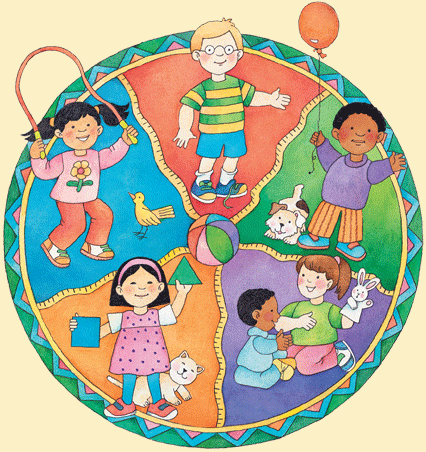
However, during the first session working 1:1 with this client at the age of 3.2 a number of things became very apparent. The child had very limited highly echolalic verbal output primarily composed of one-word utterances and select two-word phrases. She had highly limited receptive vocabulary and could not consistently point to basic pictures denoting common household objects and items (e.g., chair, socks, clock, sun, etc.) Similarly, expressively she exhibited a number of inconsistencies when labeling simple nouns (e.g., called tree a flower, monkey a dog, and sofa a chair, etc.) Clearly this child’s abilities were nowhere near age level, so how could she possibly not qualify for preschool based services?
Further work with the child over the next several years yielded slow, labored, and inconsistent gains in the areas of listening, speaking, and social communication. I’ve also had a number of concerns regarding her intellectual abilities that I had shared with the parents. Finally, two years after preschool eligibility services were denied to this child, she underwent a second round of re-evaluations with the school district at the age of 5.2.
This time around she qualified with bells on! The same speech language pathologist and psychologist who assessed her first time around two years ago, now readily documented significant communication (Preschool Language Scale-5-PLS-5 scores in the 1st % of functioning) and cognitive deficits (Full Scale Intelligence Quotient-FSIQ in low 50’s).
Here is the problem though. This is not a child who had suddenly regressed in her abilities. This is a child who actually had improved her abilities in all language domains due to private language therapy services. Her deficits very clearly existed at the time of her first school-based assessment and had continued to persist over time. For the duration of two years this child could have significantly benefited from free and appropriate education in school setting, which was denied to her due to highly limited preschool assessment practices.
Today, I am writing this post to shed light on this issue, which I’m pretty certain is not just confined to the state of New Jersey. I am writing this post not simply to complain but to inform parents and educators alike on what actually constitutes an appropriate preschool speech-language assessment.
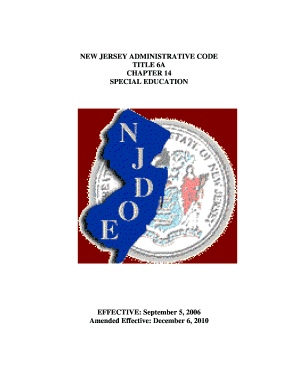 As per NJAC 6A:14-2.5 Protection in evaluation procedures (pgs. 29-30)
As per NJAC 6A:14-2.5 Protection in evaluation procedures (pgs. 29-30)
(a) In conducting an evaluation, each district board of education shall:
- Use a variety of assessment tools and strategies to gather relevant functional and developmental information, including information:
- Provided by the parent that may assist in determining whether a child is a student with a disability and in determining the content of the student’s IEP; and
- Related to enabling the student to be involved in and progress in the general education curriculum or, for preschool children with disabilities, to participate in appropriate activities;
- Not use any single procedure as the sole criterion for determining whether a student is a student with a disability or determining an appropriate educational program for the student; and
- Use technically sound instruments that may assess the relative contribution of cognitive and behavioral factors, in addition to physical or developmental factors.
Furthermore, according to the New Special Education Code: N.J.A.C. 6A:14-3.5(c)10 (please refer to your state’s eligibility criteria to find similar guidelines) the eligibility of a “preschool child with a disability” applies to any student between 3-5 years of age with an identified disabling condition adversely affecting learning/development (e.g., genetic syndrome), a 33% delay in one developmental area, or a 25% percent delay in two or more developmental areas below :
- Physical, including gross/fine motor and sensory (vision and hearing)
- Intellectual
- Communication
- Social/emotional
- Adaptive
 These delays can be receptive (listening) or expressive (speaking) and need not be based on a total test score but rather on all testing findings with a minimum of at least two assessments being performed. A determination of adverse impact in academic and non-academic areas (e.g., social functioning) needs to take place in order for special education and related services be provided. Additionally, a delay in articulation can serve as a basis for consideration of eligibility as well.
These delays can be receptive (listening) or expressive (speaking) and need not be based on a total test score but rather on all testing findings with a minimum of at least two assessments being performed. A determination of adverse impact in academic and non-academic areas (e.g., social functioning) needs to take place in order for special education and related services be provided. Additionally, a delay in articulation can serve as a basis for consideration of eligibility as well.
Moreover, according to the State Education Agencies Communication Disabilities Council (SEACDC) Consulatent for NJ – Fran Liebner, the BDI-2 is not the only test which can be used to determine eligibility, since the nature and scope of the evaluation must be determined based on parent, teacher and IEP team feedback.
In fact, New Jersey’s Special Education Code, N.J.A.C. 6A:14 prescribes no specific test in its eligibility requirements. While it is true that for NJ districts participating in Indicator 7 (Preschool Outcomes) BDI-2 is a required collection tool it does NOT preclude the team from deciding what other diagnostic tools are needed to assess all areas of suspected disability to determine eligibility.
Speech pathologists have many tests available to them when assessing young preschool children 2 to 6 years of age.
SELECT SPEECH PATHOLOGY TESTS FOR PRESCHOOL CHILDREN (2-6 years of age)
Articulation:
- Sunny Articulation Test (SAPT)** Ages: All (nonstandardized)
- Clinical Assessment of Articulation and Phonology-2 (CAAP-2) Ages: 2.6+
- Linguisystems Articulation Test (LAT) Ages: 3+
- Goldman Fristoe Test of Articulation-3 (GFTA-3) Ages: 2+
Fluency:
- Stuttering Severity Instrument -4 (SSI-4) Ages: 2+
- Test of Childhood Stuttering (TOCS) Ages 4+
 General Language:
General Language:
- Preschool Language Assessment Instrument-2 (PLAI-2) Ages: 3+
- Clinical Evaluation of Language Fundamentals -Preschool 2 (CELF-P2) Ages: 3+
- Test of Early Language Development, Third Edition (TELD-3) Ages: 2+
- Test of Auditory Comprehension of Language Third Edition (TACL-4) Ages: 3+
- Preschool Language Scale-5 (PLS-5)* (use with extreme caution) Ages: Birth-7:11
Vocabulary
- Receptive One-Word Picture Vocabulary Test-4 (ROWPVT-4) Ages 2+
- Expressive One-Word Picture Vocabulary Test-4 (EOWPVT-4) Ages 2+
- Montgomery Assessment of Vocabulary Acquisition (MAVA) 3+
- Test of Word Finding-3 (TWF-3) Ages 4.6+
Auditory Processing and Phonological Awareness
- Auditory Skills Assessment (ASA) Ages 3:6+
- Test of Auditory Processing Skills-3 (TAPS-3) Ages 4+
- Comprehensive Test of Phonological Processing-2 (CTOPP-2) Ages 4+
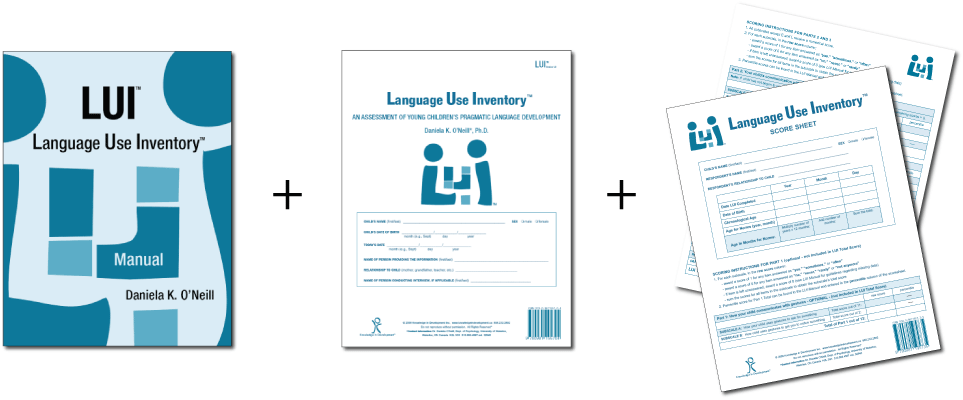 Pragmatics/Social Communication
Pragmatics/Social Communication
- Language Use Inventory LUI (O’Neil, 2009) Ages 18-47 months
- Children’s Communication Checklist-2 (CCC-2) (Bishop, 2006) Ages 4+
In addition to administering standardized testing SLPs should also use play scales (e.g., Westby Play Scale, 1980) to assess the given child’s play abilities. This is especially important given that “play—both functional and symbolic has been associated with language and social communication ability.” (Toth, et al, 2006, pg. 3)
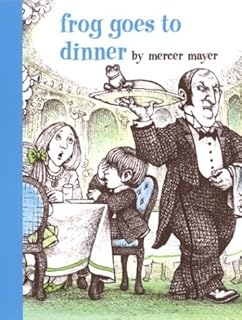 Finally, by showing children simple wordless picture books, SLPs can also obtain of wealth of information regarding the child’s utterance length, as well as narrative abilities ( a narrative assessment can be performed on a verbal child as young as two years of age).
Finally, by showing children simple wordless picture books, SLPs can also obtain of wealth of information regarding the child’s utterance length, as well as narrative abilities ( a narrative assessment can be performed on a verbal child as young as two years of age).
Comprehensive school-based speech-language assessments should be the norm and not an exception when determining preschoolers eligibility for speech language services and special education classification.
Consequently, let us ensure that our students receive fair and adequate assessments to have access to the best classroom placements, appropriate accommodations and modifications as well as targeted and relevant therapeutic services. Anything less will lead to the denial of Free Appropriate Public Education (FAPE) to which all students are entitled to!
Helpful Smart Speech Therapy Resources Pertaining to Preschoolers:
- Pediatric History Questionnaire
- Speech Language Assessment Checklist For Preschool Children
- Language Processing Checklist for Preschool Children 3:0-5:11 Years of Age
- Social Pragmatic Deficits Checklist for Preschool Children
- Recognizing the Warning Signs of Social Emotional Difficulties in Language Impaired Toddlers and Preschoolers
- Narrative Assessment Bundle
- Behavior Management Strategies for Speech Language Pathologists
- Effective Behavior Management Techniques for Parents and Professionals
- Executive Function Impairments in At-Risk Pediatric Populations
- General Assessment and Treatment Start Up Bundle
- Comprehensive Assessment of Monolingual and Bilingual Children with Down Syndrome
- Multicultural Assessment Bundle
- Creating A Learning Rich Environment for Language Delayed Preschoolers
- Strategies of Language Facilitation with Picture Books For Parents and Professionals
- Assessment of sound and syllable imitation in Russian speaking infants and toddlers
- Russian Articulation Screener
Bilingual Therapy Resources Linky Party!
 The Dabbling Speechie is having a bilingual therapy resources Linky Party so I decided to join in and write a few posts on what I am using and referencing when it comes to assessment and treatment of bilingual and multicultural children.
The Dabbling Speechie is having a bilingual therapy resources Linky Party so I decided to join in and write a few posts on what I am using and referencing when it comes to assessment and treatment of bilingual and multicultural children.
First up I’d like to tell you a little bit about the post I wrote and materials I created for this purpose.
A few months ago I did a post on Integrating aspects of multiculturalism into group language therapy sessions where I offered some suggestions on how to integrate multiculturalism into your group therapy sessions, which included books, activities and websites.

Below are a few products I’ve created for bilingual/multicultural assessment and treatment purposes:
- Normal Sequential Bilingual Language Development and Proficiency Attainment
- This 31 page introductory material describes the sequence of typical sequential (from toddlerhood) bilingual language development.
- Normal Simultaneous Bilingual Language Development and Milestones Acquisition
- This 26 page introductory material describes the sequence of typical simultaneous (from infancy) bilingual language development.
- Dynamic Assessment of Grammar
- This 13 page dynamic assessment tutorial was created to assist speech language pathologists in performing dynamic assessments of grammar with bilingual children as part of a comprehensive evaluation process to distinguish language difference vs. language disorder (the link to a FREE Syntax Assessment is also included).
- Multicultural Assessment and Treatment Bundle
- This product contains a compilation of all of the above mentioned bilingual/multicultural materials which are divided into 2 separate downloads (which can be purchased separately)
I also created specific products relevant to comprehensive data collection and narrative assessment of multicultural children
![]()
- General Assessment and Treatment Start-Up Bundle
- This product bundle contains 5 downloads for general speech language assessment and treatment planning and includes:
- Speech Language Assessment Checklist for a Preschool Child
- Speech Language Assessment Checklist for a School-Aged Child
- Creating a Functional Therapy Plan: Therapy Goals & SOAP Note Documentation
- Selecting Clinical Materials for Pediatric Therapy
- Recognizing Speech-Language delay in school age-children: a tutorial for teachers
- This product bundle contains 5 downloads for general speech language assessment and treatment planning and includes:
- The Checklists Bundle
- This product contains 4 checklists relevant to screening and assessment in speech language pathology
- Speech Language Assessment Checklist for a Preschool Child
- Speech Language Assessment Checklist for a School-Aged Child
- Auditory Processing Deficits (APD) Checklist for School Aged Children
- Social Pragmatic Deficits Checklist for School Aged Children
- This product contains 4 checklists relevant to screening and assessment in speech language pathology
- Narrative Assessment Bundle
- This product contains ontains 3 downloads relevant to narrative assessment
- Narrative Assessments of Preschool and School Aged Children
- Understanding Complex Sentences
- Vocabulary Development: Working with Disadvantaged Populations
- This product contains ontains 3 downloads relevant to narrative assessment
What materials are you using to assess your bilingual/multicultural students?
Pediatric Background History Questionnaire Giveaway
 Today I am very excited to introduce my new product “Pediatric Background History Questionnaire”. I’ve been blogging quite a bit lately on the topic of obtaining a thorough developmental client history in order to make an appropriate and accurate diagnosis of the child’s difficulties for relevant classroom placement, appropriate accommodations and modifications as well as targeted and relevant therapeutic services.
Today I am very excited to introduce my new product “Pediatric Background History Questionnaire”. I’ve been blogging quite a bit lately on the topic of obtaining a thorough developmental client history in order to make an appropriate and accurate diagnosis of the child’s difficulties for relevant classroom placement, appropriate accommodations and modifications as well as targeted and relevant therapeutic services.
Continue reading Pediatric Background History Questionnaire Giveaway
Help, My Child is Receiving All These Therapies But It’s NOT Helping
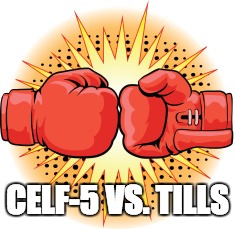 On a daily basis I receive emails and messages from concerned parents and professionals, which read along these lines: “My child/student has been diagnosed with: dyslexia, ADHD, APD etc., s/he has been receiving speech, OT, vision, biofeedback, music therapies, etc. but nothing seems to be working.”
On a daily basis I receive emails and messages from concerned parents and professionals, which read along these lines: “My child/student has been diagnosed with: dyslexia, ADHD, APD etc., s/he has been receiving speech, OT, vision, biofeedback, music therapies, etc. but nothing seems to be working.”
Up until now, I have been providing individualized responses to such queries, however, given the unnerving similarity of all the received messages, today I decided to write this post, so other individuals with similar concerns can see my response. Continue reading Help, My Child is Receiving All These Therapies But It’s NOT Helping
Alternative Therapies, Herbs, Pills, and Snake Oils or “What’s the Harm in That?”
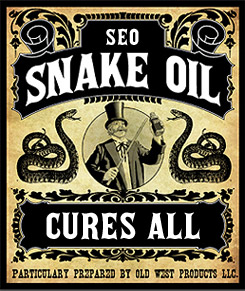 I’ve been meaning to write this post for some time and have finally decided to do it now due to an increased prevalence of “non-traditional” treatment options available to parents of language impaired children.
I’ve been meaning to write this post for some time and have finally decided to do it now due to an increased prevalence of “non-traditional” treatment options available to parents of language impaired children.
More and more unscrupulous or misguided individuals are offering fantastical cures to children diagnosed with the wide variety of disorders including but not limited to: Autism (ASD), Childhood Apraxia of Speech (CAS), language disorders, “Auditory Processing Deficits (APD)“, Dyslexia, and much much more.
What are some examples of controversial products and therapies you may ask?
Below I cite several links (which are in no way exhaustive) for your convenience.

Controversial Autism Treatments:
In 2013, Dr. Emily Willingham, guest writer for Forbes magazine wrote a post on the topic of “The 5 Scariest Autism ‘Treatments. In it she described some pretty horrifying methods (e.g., chelation, chemical castration, hyperbaric oxygen therapy) which purportedly promised to “cure” autism. For more information on other controversial treatments in autism click to read this keynote address entitled Evidence-Based Practices for Children with Autism Spectrum Disorders by Dr. Tristram Smith for The Society for Clinical Child and Adolescent Psychology (SCCAP).

Controversial Speech Sound Disorder Treatments
Dr. Caroline Bowen respected Speech Language Researcher from Australia has a delightfully edifying page on her website (http://speech-language-therapy.com/) entitled: “Controversial Practices in Children’s Speech Sound Disorders – Oral Motor Exercises, Dietary Supplements, Auditory Integration Training”. On it she thoroughly reviews non-research supported practices to improve children’s sound production including the use of oral motor/mouth exercises, dietary supplements (Apraxia Diet, Nourish Life Speak, Nutri Veda, etc.), as well as Auditory Integration Training (AIT).
Parent‐Friendly Information about Nonspeech Oral Motor Exercises (HERE)
Controversial Treatments for Children with Developmental and Learning Disabilities
Macquarie University Special Education Centre in Sydney Australia has even developed concise one-page briefings of a vast number of controversial treatments for children with developmental and learning disabilities (selected briefing links are below; the full list of briefings is available HERE):
- Behavioural Optometry
- Learning Styles
- Fast ForWord Language
- Cellfield Program
- The Listening Program
- Irlen Tinted Lenses and Overlays
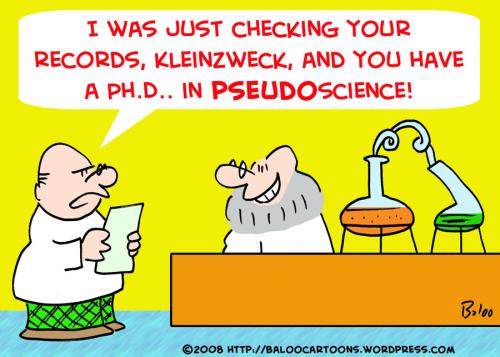
How to Spot Controversial Practices?
In her 2012 post entitled: “10 Questions To Distinguish Real From Fake Science“, Dr. Emily Willingham wrote that “science consumers need a cheat sheet … when considering a product, book, therapy, or remedy”. She advised consumers to consider some of the following criteria:
- Consider the source
- Determine their agenda
- Do they use highly emotionally charged language or meaningless jargon?
- Are they relying on testimonials vs. evidence?
- Are they claiming to be exclusive?
- Do they mention words like ‘conspiracy’?
- Is their treatment promising to cure multiple unrelated disorders?
- What does the money trail reveal?
The truth is that there’s a lot of pseudoscience out there and as such it is very important for both parents and professionals not to fall into its trap. In 2012, Dr. Gregory Lof presented the following poster at the ASHA’s Atlanta Convention: “Science vs. Pseudoscience in CSD: A Checklist for Skeptical Thinking” to “help clinicians evaluate claims made by promoters of products or services to help determine if they are based on scientific principles or on pseudoscience”. An interactive version of the checklist is available HERE, and for the summary based on the checklist, written by Mary Huston, fellow SLP and author of the Speech Adventures, click HERE.
So what do pseudoscientific practices/claims look like?
- People place heavy emphasis on beliefs and opinions vs. data, when it comes to therapeutic claims
- SLPs: “You are wrong! I’ve seen ________ work with my clients!”
- Parents: “Who cares about your research this _______worked for us so HOW DARE YOU question it?
- The presented data is based on “expert opinions”, testimonials, and isolated case studies
- “These ridiculously expensive ‘speech sticks’ at $120 a pop worked for us, Yay!”
- Data is disseminated via self-published books, popular press, proprietary websites lacking research sections, as well as non-peer reviewed conferences.
- You might want to review the list of predatory publishers HERE, review the guide of how to spot a bogus scientific publication HERE, and if you ever find yourself reading anything on this website, I suggest you close your laptop as fast as you can and possibly put it into another room for a while (Read Why – HERE).
- Treatment sounds like a magic potion since it works on a wide range of disabilities, appeals to fears and wishful thinking, preys on the desperate and uses hyperboles (“miracle cure”)
- Use of disdainful comments against researchers because “only clinicians do real clinical work”coupled with over reliance on clinician’s experience and subjective judgment since it’s the “best way” to determine effectiveness
- “I’ve found ___________ to be highly effective with gazillion clients”.
- Lack of change in practices despite a veritable mountain of evidence to the contrary
- “Your child NEEDS oral-motor exercises, NOW, for his speech to get better”
- New terms are created to mask use of disproven pseudoscientific practices

Why do we keep believing when all the evidence points to the contrary?
Because our brains become emotionally attached to ideas. This is further supported by the construct of two biases.
Confirmation bias – our tendency to look for/interpret information in a way that confirms our beliefs by “cherry picking” the evidence that supports what we believe in and ignoring the evidence that argues against it.
Disconfirmation bias – when facing with evidence which directly contradicts our beliefs we will criticize and reject it because we do not want to be wrong.

So now let’s get back to talk about the title of this post: “What’s the harm in that?”
While I am accustomed to seeing the variation of this statement on parent forums, I was surprised when I learned that it’s popping up quite often in some unexpected places such as during IEP meetings or during doctor visits (as reported to me by some of my client’s parents).
So I wanted to take this opportunity to explicitly point out what the harm in these alternative practices could be, ranging from the obvious to the hidden.
For starters some of these ‘therapies’ could kill!
- Over the years there has been a number of reports regarding deaths from controversial autism treatments including chelation and GcMAF injections.
Even if they don’t kill you they can cause some nasty side effects!
- To illustrate, Nourish Life Speak Nutrients, which were prescribed to children to “increase their language output or to make them speak better”, were so loaded with vitamin E (way above the legal amount), that a number of children who were taking them experienced significant seizure activity.

It’s going to cost you!
- Out of sheer desperation, families will spend tens of thousands of dollars on ‘alternative’ treatments which are ineffective at best and harmful at worst. To illustrate via a fairly benign example. Here’s the typical question that can be seen on a variety of parent forums pertaining to therapies for “(C) APD”: Q: My nine-year-old was diagnosed with mild auditory processing problems and ADHD, inattentive type. It was recommended that she do Fast ForWord. This is very expensive — $3,500 in the office and $1,100 at home. Does this program work and is there a benefit to doing it in the office? I would hate to spend $3,500 for nothing. The problem is that “systematic reviews found no sign of a reliable effect of Fast ForWord® on reading or on expressive or receptive spoken language.” So where does that leave the parents who spend thousands of dollars on this program in hopes that it really will improve oral language and reading abilities of their children? This leads me to my next point.

They create false hope!
- Whether it’s a placebo or the Hawthorne effect, or just a desperate desire to believe that something is working after you have sank so much hope, time, money, and energy into it, it may look like ineffective treatments are working at least for a short period of time. However, sooner or later parents start to notice that the issues whatever they may be continue to persist or even worsen despite the provided treatment. To illustrate, let’s take an example of a child with severe speech delay who is prescribed oral motor exercises to improve their speech production. At first, it appears that doing tongue curls, blowing kazoos, and chewing on bite blocks appears to be working and the child’s speech seems more intelligible. However, soon the parents may realize that while this expensive treatment is taking a significant period of time to complete the child’s speech production did not functionally improve since the therapist did not work directly on increasing the child’s repertoire of sounds and words.
They can create a sense of bitterness and hopelessness!
- Ever spoken to parents who have tried every alternative treatment possible and have subsequently given up? If you haven’t, I assure you it’s not a pleasant or productive conversation. At best you will hear a lot of vitriol and accusations and at worst they may actually start a forum thread or a website bashing effective treatments such as speech language therapy because of their negative experiences. When you believe that you have tried everything and it’s still not helping, you feel defeated and lost and as a result tend to attack blindly anyone who attempts to assist you because you’ve stopped perceiving it as assistance but rather as just another scam.

They delay effective research-proven treatments!
- Last week I wrote a blog post entitled: “Why (C) APD Diagnosis is NOT Valid!” citing the latest research literature to explain that the controversial diagnosis of APD tends to a) detract from understanding that the child presents with legitimate language based deficits in the areas of comprehension, expression, social communication and literacy development and b) may result in the above deficits not getting adequately addressed due to the provision of controversial APD treatments. In other words I was in NO way trying to disprove that the processing deficits exhibited by the children diagnosed with “APD” were not real. Rather I was trying to point out that these processing deficits are due to a different cause – namely a language disorder which has turned into a language disability and as such needed to be addressed by linguistic rather than ‘auditory’ therapies. In other words what research has found you can get auditory therapies indefinitely and with great frequency but they would still NOT generalize to improve the child’s language abilities (including reading) in the affected areas. The problem is that by delaying legitimate therapies (e.g., in the above case evidence-based reading intervention for the student) there is a significant risk of poorer social and academic outcomes as the child grows older.
They affect self-esteem and self-efficacy!
- Now enough about parents and professionals. Let’s actually take a moment to talk about effect of these alternative practices on the most important people in question: the children who are on the receiving end of it! Let’s talk about all the negative effects that can be incurred by them by undergoing these useless treatments time after time. And no I am not actually talking about the hugely dangerous treatments, which can cause physical harm or awful side effects. I am talking about the relatively benign treatments of “vision therapy”, “memory training”, etc.
- To illustrate, I work with are very bright 11-year-old boy with significant reading deficits and an extensive history of reading disabilities in the family. This boy’s deficit is in the area of reading, there is no doubt about it! He knows it and it’s very acutely aware of it. However, at the advice of well-meaning professionals he was taken to a behavioral optometrist, who told his mother that his issues with reading are due to visual processing deficits (despite the fact that his ophthalmologist ruled out any vision difficulties and declared his vision to be 20/20). It was then recommended that he undergo a costly vision therapy program in order to improve his “visual processing”. Guess, what his first words were, when I saw him in my office for reading intervention? ‘I went to the doctor who told me that I have problems in my eyes and that I need to stop reading! So I can’t do any more reading because of my eye problems.’ Imagine how he will feel when after several months of costly therapies there will be no functional improvement in his reading skills, since the only thing which can improve his reading abilities is the actual targeted reading instruction!
- Our students are very acutely aware when something is not working. Just like us they get increasingly frustrated after being dragged from one professional to another, after ‘suffering’ through one controversial treatment after another with no respite in sight. Imagine what havoc it begins to wreak on their self-esteem and their self-efficacy (belief in own abilities to complete tasks and reach goals), when they keep undergoing these treatments without any improvement? All the negative self-talk they will use? Here are just a few statements I’ve heard over the years: “I am so stupid”; “There’s something wrong with my brain”, “I am not good at this, etc.) Instead of building them up these alternative therapies and treatments will not just tear them back down but may potentially cause behavioral and psychiatric effects to boot.
 There you have it: that’s what the harm is! The toll of these quack practices can be very significant and can go far beyond the financial. So the next time someone utters the statement: “What’s the Harm in That?” consider the above information in order to make the informed decisions regarding the treatment for the most vulnerable parties involved: the children in your care!
There you have it: that’s what the harm is! The toll of these quack practices can be very significant and can go far beyond the financial. So the next time someone utters the statement: “What’s the Harm in That?” consider the above information in order to make the informed decisions regarding the treatment for the most vulnerable parties involved: the children in your care!
Focus on the common core
 Today I am reviewing two products by Lindsey Swanson-Karol of the Word Nerd Speech Teach Blog related to the core curriculum: the Common Core Based Language Assessment as well as her Robot Phonological Awareness Pack.
Today I am reviewing two products by Lindsey Swanson-Karol of the Word Nerd Speech Teach Blog related to the core curriculum: the Common Core Based Language Assessment as well as her Robot Phonological Awareness Pack.
Those of you who follow my blog know that when I select materials, I always try to make sure that the materials are multipurpose, multi-functional, and curriculum embedded.
First up is the Common Core Based Language Assessment. This 14 page informal language assessment is based on the common core for K-5 grade in the areas of the curriculum relevant to speech-language pathology. Continue reading Focus on the common core